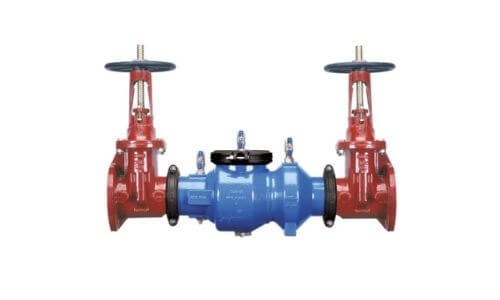Listed here in the next paragraph yow will discover a bunch of quality resources about Backflow Assembly Testing.

Yes, you require to backflow test your residence's water system to guarantee that the water is devoid of toxic substances and damaging levels of chemicals. As a result of the devices called for as well as room for mistake, you should not try to carry out heartburn testing by yourself. We recommend that you call an expert plumber every couple of years to evaluate your water.
Backflow Can Influence Both You and Your City
Due to the fact that dangerous backflow can affect the public water supply in addition to a solitary building, numerous cities develop backflow guidelines. Modern-day cities have backflow tools in location that safeguard the water supply that comes from many houses as well as commercial residential or commercial properties. The real hazard comes from irrigation systems, which can damage the water with toxic plant foods, manure, and also other chemicals.
What Creates Backflow?
A normal cause of heartburn is a loss of water stress that triggers the water to siphon back right into the water supply. After some time, there is a loss in water pressure and also the tube starts to draw the water back into the water supply. As you can think of, there are now chemicals from the paint that are entering the water supply, possibly posing a threat.
Heartburn Testing is Needed by Law in Specific Cities
Relying on where you live, you may really be called for by law to backflow test your regulation. As an example, Iowa City keeps a record of all residential or commercial properties offered by the city's water. The city calls for that certain "high-hazard" centers undertake heartburn screening. In some cases, houses such as residences and apartment are influenced.
You Can Protect Against Backflow
Dangerous backflow is easily preventable if you have a professional plumber mount a heartburn gadget. The plumber will also examine for heartburn and also identify if there is an active risk. The primary function of a backflow device is to stop water from streaming backwards into your water supply. Plumbings install the gadget on the pipes in your residence to guarantee that the water just flows in the proper direction.
What is Backflow?
Simply put, heartburn is when water moves upwards-- the opposite instructions in the plumbing system. This is likewise called "backpressure." When the water relocates this direction, it can blend with harmful toxic substances and also present a danger.
Call a Plumber to Check for Backflow Prior To It is Too Late
A plumbing company can rapidly check your house's water to establish if there are any kind of dangerous chemical levels. As well as if you do find that your water has high levels of toxic substances, a plumber can quickly set up a heartburn avoidance gadget.
Yes, you require to backflow test your house's water supply to make sure that the water is complimentary of contaminants and also dangerous degrees of chemicals. Lots of cities establish backflow guidelines due to the fact that harmful backflow can impact the public water supply in addition to a single structure. A typical reason of backflow is a loss of water pressure that creates the water to siphon back into the water supply. After some time, there is a loss in water pressure as well as the hose starts to suck the water back right into the water supply. The main objective of a backflow tool is to avoid water from moving backward right into your water supply.
Backflow Testing: What Is It, and Why Is It Necessary?
What Is Backflow?
Backflow is exactly what you might imagine this somewhat gross-sounding word to mean. It is contaminated water that has reversed flow, and as a result, enters into the clean water lines of homes and businesses. Backflow is typically caused by a significant change in water pressure. This can be due to a water main break, frozen pipes or an unexpectedly high demand on the water system. It can occur at any cross-connection between clean and dirty water in residential, commercial or industrial water lines. And the worst part – backflow can contain hazardous materials like human waste, pesticides or chemicals. Needless to say, it poses very, very serious health concerns, not to mention the potential for a heap-load of expensive stress!
Backflow Prevention and Testing
In order to safeguard against backflow in standing structures, a backflow prevention device should be installed by a trusted team of professionals. Once installed, if there should ever be an unexpected or dramatic change in water pressure, the device will prevent backflow from entering into the clean water supply system. But, again, it’s important that this device is properly installed by a professional so that they can test it and ensure that the clean water line remains contaminant free. This really is key.
While personal standards and responsibilities should maintain certain routine testing requirements, there are already municipal codes in place that require annual testing of these backflow prevention devices. This ensures that they are functioning properly and that no hazardous contaminants are spilling out into the clean water supply. If, however, testing of any device is not completed on time, you should know that a property or business’ water supply might be interrupted, and the property owner might even face fines. So, to avoid this from happening to you, we recommend scheduling a backflow test well in advance.
Fortunately, here at Tritan, we can help schedule and carry out backflow testing for your property. We provide a variety of backflow-related services, including prevention device installation and testing. Call us today and make sure that this stressful problem doesn’t happen to you and your property or business.
https://www.tritan-plumbing.com/blog/2018/february/backflow-testing-what-is-it-and-why-is-it-necess/

I was introduced to that editorial about Commercial Backflow Testing from an acquaintance on our other web page. Loved our posting? Please share it. Let other people discover it. Many thanks for your time spent reading it.
Learn More